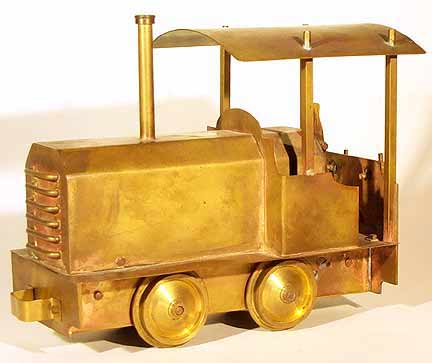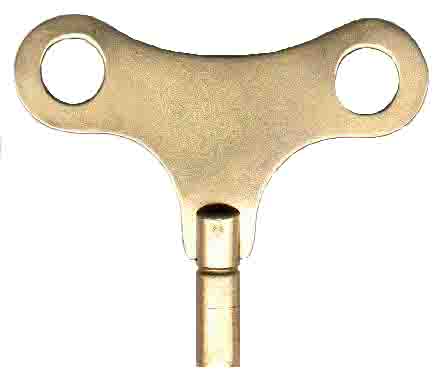The story of Marc Horovitz's Marx-powered narrow gauge locomotive as described in an article in the September-October 1987 issue of Garden Railways magazine.
I have always had a fascination with clockwork, or more properly called, spring drive engines. Don't ask me why - probably a vitamin deficiency when I was a baby. I've had windups as long as I can remember. My mother has a photograph of me taken when I was four, playing with my windup Marx train on the bedroom floor. This no doubt influenced my development (or lack thereof) when it came to model trains. As I grew older and somewhat wiser concerning things train-like, I went on to electricity and eventually graduated to steam. Narrow gauge became a primary focus, but I still harbored a love of spring drive.
I n Dave RowIands ' correspondence, he shared with me some of his personal experiences concerning spring drive locomotives. Says Dave, "I once watched Drew Donaldson start his loco off on a train, walk around the layout and point with his finger at a certain spot on the track. The train came around, slowed up a slight rise into the station, and the loco stopped within an inch of his finger. Takes some believing, but that was the standard those boys worked to!"
"I have a forceful memory of visiting a local garden line and getting into trouble for picking up a clockwork loco from its train to wind the spring. Apparently this was the crime of the century! In proper clockwork circles you wind the loco on the track and are pretty discrete about it, like making a quick exit when your child has thrown up on the store carpet or your dog has messed outside the newsagent's."
I decided I must have a spring drive locomotive for our garden railway. There are no commercially made locomotives available today, especially in 16mm scale narrow gauge, so I was left with no choice but to build my own. There were a couple of old Marx mechanisms floating around the workshop, so I resurrected one of them and set to work.
The first problem was gauge. I wanted to be able to run on gauge I track, but the mechanism was gauge 0. The wheels were popped off and new ones were found, brass wheels made by Delton. I know that brass is a slippery metal and not generally suited to locomotive wheels, but I suspected - and was later proved right - that excess pulling power and wheel slippage would not be a problem with this particular engine.
Stub axle extenders were turned on the lathe and the wheels were soldered to them. The new wheel/stub axle assemblies were then fitted over the mechanism axles.
I'm not one for modelling particular prototypes; I prefer to design my own equipment to suit the needs of our Ogden Botanical Railway. After several false starts I arrived at the design that evolved into what is pictured here. You'll notice some detail differences between the drawing and photos, but when you're both client and contractor you can get away with it.
The management of the OBR required a light duty locomotive that would be inexpensive to run and build. An open cab was dictated out of a general lack of regard by management for crew comfort. The winding key is carried on a rack immediately behind the cab wall so as to be within easy reach of the driver, should he/she detect failing power on the upgrade.
Construction is all brass, though styrene could just as easily have been used instead, and in fact might have been a better choice because of its lighter weight. Mechanical connectors were kept to a minimum, and as many joints as possible were soldered.
Performance is adequate, though not spectacular. A level track is j ust about mandatory, and a downgrade improves performance splendidly. A light train can be hauled about 80' on a full winding not outstanding, but what can one expect from a mechanism which probably sold for $2 when it was new thirty years ago?
The loco travels in one direction only, and woe to the hapless driver who runs the train into a dead-end siding! As an additional perversity, the engine must be wound counterclockwise, which invariably confuses new engine crews. The loco has two speeds - On and Off and is controlled by a lever in the cab which is connected to the original lever atop the mechanism. The speed of the unmodified mechanism was judged to be a little high, so extra weight was added to the governor, which slowed the engine down a little.
Click on the key below to go back to the Clockwork Creations Page

